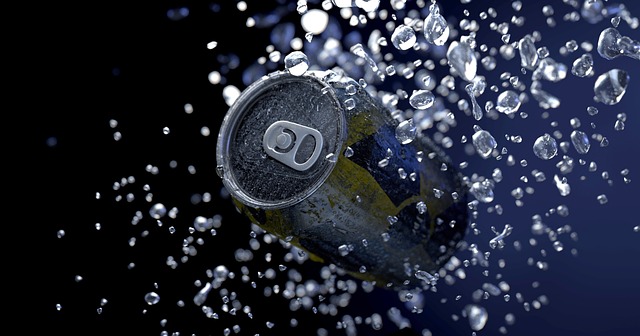Contrast water therapy, involving alternating hot and cold immersions, is revolutionizing endurance athletics recovery. This ancient practice triggers physiological changes, enhancing blood circulation to reduce inflammation, increase nutrient flow, and deliver more oxygen to muscles. The method expedites healing, alleviates pain, reduces muscle stiffness, and boosts flexibility, ultimately optimizing athletes' recovery for endurance events. By facilitating waste removal, contrast therapy cuts muscle soreness and recovery times, making it a sought-after tool among elite runners and cyclists. Sports professionals increasingly recognize its value in promoting efficient athlete recovery.
“Optimize your training regimen and elevate your performance with the power of contrast water therapy—a game-changing strategy for endurance athletes. This comprehensive guide explores the science behind this innovative recovery method, offering insights into how it accelerates muscle repair and reduces inflammation. From implementing techniques in daily routines to real-world success stories, discover the benefits of contrast therapy for enhanced endurance and faster recovery times. Uncover the secrets to achieving peak physical condition.”
Understanding Contrast Therapy and Its Benefits for Athletes
Contrast therapy, also known as alternating cold and heat treatment, is a time-honored practice gaining popularity among endurance athletes looking to enhance their recovery process. This simple yet powerful technique involves immersing oneself in alternating periods of hot and cold environments, typically using water at different temperatures. By quickly switching between heating and cooling the body, contrast water therapy for sports recovery stimulates various physiological responses that benefit athletic performance and speed up recovery times.
One of the key advantages of contrast therapy is its ability to improve blood circulation. The initial exposure to cold narrows blood vessels, reducing blood flow to muscles. This process helps alleviate inflammation and muscle soreness. Subsequently, moving to a hot environment causes blood vessels to dilate, increasing circulation and delivering essential nutrients and oxygen to the worked-out muscles, promoting faster healing. Moreover, contrast therapy can help athletes manage pain, reduce muscle stiffness, and improve overall flexibility, all of which contribute to optimal recovery for endurance events.
The Science Behind Contrast Water Therapy for Recovery
Contrast water therapy, involving alternating between hot and cold water, has gained significant attention in the world of endurance athletics as a powerful tool for accelerating post-workout recovery. This method leverages the body’s response to temperature changes, stimulating blood flow and promoting efficient waste removal. When an athlete immerses themselves in hot water, blood vessels dilate, increasing circulation and enhancing oxygen delivery to tired muscles. Conversely, cold water narrows these vessels, reducing inflammation and minimizing muscle soreness.
The science behind contrast therapy suggests that this back-and-forth temperature shift can significantly shorten recovery times, allowing athletes to return to training or competition faster. By facilitating the removal of metabolic byproducts like lactic acid, it reduces muscle stiffness and fatigue, ensuring athletes are ready for their next intense session. This natural recovery method is a game-changer for endurance sports, offering a potential alternative to traditional recovery practices while promoting overall well-being.
Implementing Contrast Therapy in an Endurance Athlete's Routine
Implementing contrast therapy in an endurance athlete’s routine can significantly enhance post-workout recovery. This technique, often referred to as contrast water therapy for sports recovery, involves alternating between hot and cold temperatures. During a typical session, athletes immerse themselves in warm water, typically around 104°F (40°C), to increase blood flow and elevate metabolism. Following this, they transition to cold water, usually at or below 59°F (15°C), which causes vasoconstriction, reducing blood flow back to the muscles. This contrast stimulates the circulatory system, accelerating the removal of metabolic waste products like lactic acid, while also enhancing oxygen delivery to active tissues.
Regular integration of contrast therapy into training regimens can help endurance athletes shorten recovery times between intense workouts and competitions. By promoting efficient waste removal and enhanced circulation, contrast water therapy for sports recovery enables athletes to maintain peak physical condition, ensuring they are ready to perform at their best when it matters most.
Real-World Success Stories: Case Studies of Improved Recovery
In real-world applications, contrast water therapy for sports recovery has proven to be a game-changer for endurance athletes. Numerous case studies highlight the benefits of this technique, demonstrating significant improvements in recovery times and overall athletic performance. For instance, elite long-distance runners have reported reduced muscle soreness and quicker post-workout recovery after incorporating contrast showers into their routines. Another study focused on cyclists showed improved blood circulation and faster recovery following contrast water therapy sessions, enabling them to train harder and maintain intensity over extended periods.
These success stories illustrate the practical advantages of contrast therapy in endurance sports. By effectively managing lactic acid buildup and promoting efficient waste removal, athletes can enhance their recovery process, leading to more consistent training schedules and potentially better performance outcomes. As a result, many professionals in the athletic field are embracing contrast water therapy as a valuable tool to optimize recovery and keep athletes on top of their game.
Contrast water therapy has emerged as a powerful tool for endurance athletes seeking to optimize their recovery. By combining hot and cold immersion, this simple yet effective technique accelerates blood flow, reduces muscle soreness, and enhances overall athletic performance. With its scientific backing and numerous real-world success stories, incorporating contrast therapy into an athlete’s routine can significantly improve recovery time and contribute to peak physical condition. For those dedicated to pushing their endurance limits, exploring contrast water therapy is a game-changer that could be the key to unlocking greater training potential.
